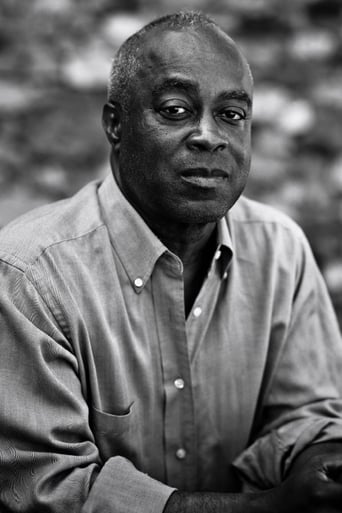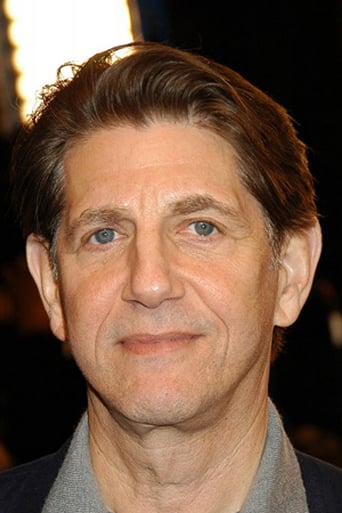Steve Pulaski
These Amazing Shadows takes an in-depth look at an underrated organization that is dedicated to preserving and maintaining films in their current form. The National Film Registry was founded in 1988, coinciding with the passing of the National Film Preservation Act, after a suit at MGM threatened to colorize classic black and white pictures after his purchase of the company. The NFR has been devoted to preserving films that are "culturally, historically, or aesthetically significant." Since '88 they have preserved over five-hundred films, along with quite a few short films and minor, culturally significant snippets.I'd rather spend this time discussing my thoughts on the registry rather than the documentary itself. There isn't a whole lot to say about the film, but there's a plethora to discuss about the registry itself. First off, let me say this is an organization that needs to exist. It may seem pointless to some; an organization that collects movies? What's the point? Speaking more as a common-man than an avid film reviewer, it is important to preserve an art form so we can not only gain knowledge of the thing itself, but gain knowledge of the time period it is portraying or when it was made. Here's a good question to ponder for those still unconvinced; why do we have history textbooks? There are a plethora of films in the registry now that absolutely deserve to be in there, and several still waiting to be recognized (my main recommendations would be De Niro's underrated and unsung A Bronx Tale and Scorsese's masterpiece Casino). Films like Citizen Kane, Close Encounters, Do the Right Thing, E.T. The Extra-Terrestrial, The Godfather, Goodfellas, Malcolm X, Raiders of the Lost Ark, Star Wars, To Kill a Mockingbird, and even The Rocky Horror Picture Show exist in the registry, all serving a unique and valid purpose.What I love about the organization is that it isn't biased. If the NFR had an attitude like the MPAA, if I proposed the inclusion of Rocky Horror, it would most likely be met with sneers and laughs. I had the same reaction to its placement as did another member. If it can have a run at midnight showings all across the country, with people dressing up as characters, playing games, and having fun, it must speak to people in some way. For that reason, it is culturally, historically, and aesthetically different. And boy is it more than aesthetically different.I was fascinated by the inclusion of many short films as well. There is a short film in the registry called H20, directed by Ralph Steiner. The short is thirteen minutes, and involves shots of flowing water that gradually become closer and closer to the point where it becomes almost unrecognizable. "You forget it's water" says a woman working in the registry. The short is captivating in every sense of the word and can be found on Youtube to this day. People can't see themselves enjoying such a flimsy, basic idea, but anyone with an open mind and a strong appreciation for cinema will definitely be entranced.Another short I desperately would like to see is called Topaz, depicting life in the Topaz War Relocation Center in Utah during World War II. We are shown brief shots of the film, but to my knowledge, it is not commercially available, most likely because it was shot illegally. Another short I'd like to see is called Cologne: From the Diary of Ray and Esther. The short depicted life with the German-American community with the approach of World War II in sight. Unfortunately, like Topaz, it is not commercially available. Another charming short on the list was an old ad played at theaters to hopefully have a run on concession stand items; Let's All Go to the Lobby.As far as the documentary These Amazing Shadows goes, it is nothing shy of wonderful. Eighty-eight minutes races by as we are shown the painstaking process of preserving a film, a room full of cold, well-kept film reels, and the concept of how films are elected in the registry (they are in a very democratic procedure by voting online). This is a must see documentary for those concerned with film's future and where it stands today.Starring: Christopher Nolan, John Waters, Barbara Kopple, Tim Roth, John Lasseter, Wayne Wang, and Julie Dash. Directed by: Paul Mariano and Kurt Norton.
MartinHafer
"These Amazing Shadows" is a very inspiring film. You cannot watch it without feeling a strong sense of the importance of film preservation and film as an important part of our history. However, the film suffers from trying to do WAY too much in much to short a time. I could easily see several films or even a series come out of this material and felt the film just went way too fast.The beginning of the film talks about the fragile nature of nitrate film stock (the standard for movies until the mid-1950s). You see how the film tends to stick together or turn to powder--though this is a bit rushed, as they never really talked about how combustible these old films are as well. And then you get to hear some film preservationists from the Library of Congress talk about their love of their work. I LOVED this part of the film and really wished they had just focused on this or perhaps done so a bit longer.The next portion of the film is the biggest problem. A sampling of SOME of the films on the National Film Registry is given and folks say a few blurbs about them and what stands out about these films. Well, considering how important and great these films are, they certainly deserved MUCH more about why they were chosen and why they are so unique. It felt like someone trying to encapsulate the entire Bible or American History in 90 minutes or less! Overall, this is a nice introduction into film preservation and the National Registry, but better films on similar subjects have been made--ones that are more thorough and less episodic--such as "Henri Langlois: The Phantom of the Cinémathèque". Well worth seeing nevertheless.
Kevin Miller
Despite not having enough of Christopher Nolan and Tim Roth interview to show and the movie feeling longer than it was this is a pure gem for movie lovers like myself. This docu tells the interesting story of the national film registry and how films are picked as well as showing a variety of clips from those movies that have been picked and have made an impact on other people in the business. We get plenty of great interviews from people in the business such as famous director John Singleton and John Lasseter, as well as studio executives, and people who are part of the committee that votes on the films to be put into the registry. We get insight into the job of someone who works hours on end to help preserve films that are extremely old and were not designed to stand the test of time. Knowing that certain films dating back before the 1950s were neglected due to the studios having no use for them once they did their job in making money is quite disturbing and makes me appreciate those films from a long time ago that are available for our viewing pleasures. If you are someone who is addicted to watching movies and remembers when watching movies didn't mean picking out the good from the bad and just being awed by whatever lay on screen or are interesting in going into the business, this is worth watching and is a sure contender for best documentary if the Academy allows it.
suzannechapot
I saw this film twice at Sundance in sold out theaters, and the audiences loved it. It has something for everyone who loves movies. It is funny and sad and fascinating with great film clips and interviews. These Amazing Shadows uses the National Film Registry as a platform to show how important films are as a reflection of the our culture and heritage. Twenty-five films are selected each year to the registry for preservation, and we see clips of everything from the music video "Thriller" to "The Rocky Horror Show" to the Zapruder film. I was especially moved by the section on Topaz, the "home movie" about the Japanese internment camps. A movie everyone should see.



